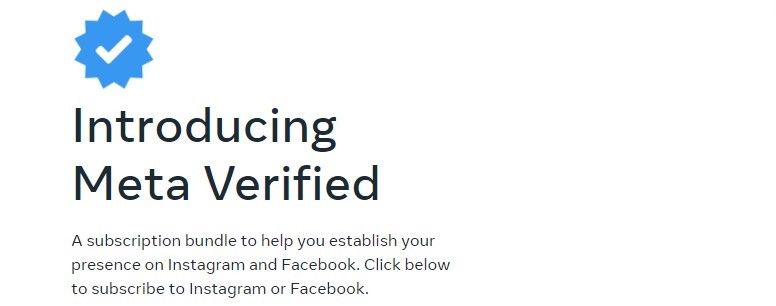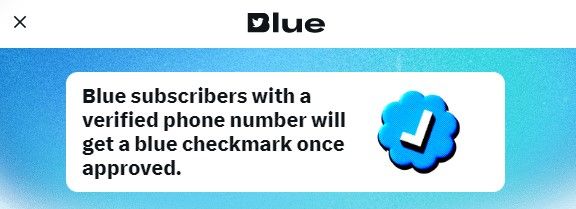The blue checkmark that appears next to your name on social media platforms is no longer exclusive to celebrities and public figures. Users can now subscribe to Twitter Blue and Meta Verified, two new subscription services from Twitter and Meta, to enjoy some extra perks for a monthly or yearly fee.
Twitter Blue was relaunched at the end of 2022, and Meta announced its subscription bundle two months later. But which of these services provides the most value?
Meta Verified Versus Twitter Blue: What Features Do You Get?
When you pay for subscriptions to Twitter, Instagram, and Facebook, you will have access to exclusive features that are unavailable to free users.
There are several similarities between Twitter Blue’s new version and Meta Verified. These features include:
- A verified profile badge
- Customer support
Features Exclusive to Meta Verified
Although there are other customization features, the main focus of Meta Verified’s exclusive features is user security.

Features unique to Meta Verified include:
- Access to human support agents
- Exclusive stickers for Instagram stories and Facebook reels
- Verification for two accounts (Facebook and Instagram)
- Active impersonation monitoring for accounts
Features Exclusive to Twitter Blue
Twitter Blue gives a lot more customization features in comparison to Meta Verified.

Twitter Blue’s features include:
- Editing and undoing tweets
- Longer tweets
- Bookmark folders
- NFT profile pictures
- Custom app icons
- Colorful themes
- Custom navigation
- A shortcut to the top articles in your network
- Finding podcasts, themed audio stations, recorded Spaces, and live Spaces in one tab
- SMS 2FA
Pricing Compared
The Twitter Blue subscription costs $8 per month or $84 annually for the web version, while iOS and Android subscriptions are $11 per month or $114.99 annually.
Meta Verified subscriptions are more expensive than Twitter Blue and don’t offer annual subscriptions. It costs $11.99 per month for the web version and $14.99 per month for the iOS and Android apps. Both services charge different fees for their web and mobile apps—the membership fee for iOS and Android is more.
Right now, Twitter Blue subscription fees are not refundable. In contrast, the Meta Verified subscription plan automatically issues a refund if your account isn’t verified after two attempts, although it can take up to 60 days.
How Verification Works
When you subscribe to Twitter Blue, the verification process can be started from the Twitter account settings. You must meet minimum activity requirements—your account must be at least 30 days old and active in the last 30 days to be eligible to apply for Twitter Blue verification.
You can subscribe to Meta Verified by using the settings for your Instagram or Facebook account. However, you are only eligible to apply for verification if you match the criteria. You must provide a government ID to authenticate your account because the verified badge confirms your identity to other Instagram and Facebook users. You must also be at least 18 years old.
Twitter Blue Versus Meta Verified Support
Twitter Blue and Meta Verified both offer support. However, Twitter Blue offers support for subscription-specific issues only.
You can access live chat customer support from Meta Verified for the most common account issues, so it wins here.
Which One Is Worth the Cost?
Although Twitter Blue is less costly, most of its features focus on personalization rather than more visibility. On the other hand, Meta Verified, which just debuted, lacks a number of features that would improve it.
Both of the monthly subscription plans are beneficial if you want more protection from impersonation. If you are a creator, we suggest you subscribe to the social media network that will help you grow your audience and popularity.
In general, Twitter Blue and Meta Verified offer these companies the chance to monetize their services and generate revenue from sources other than digital advertising.
